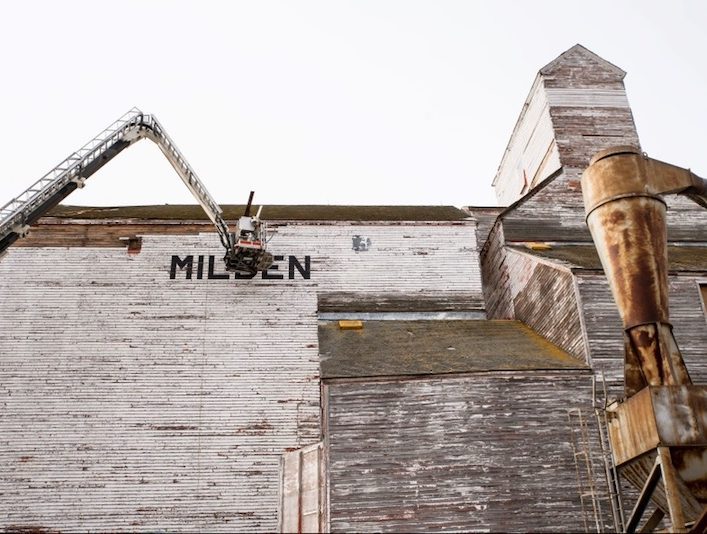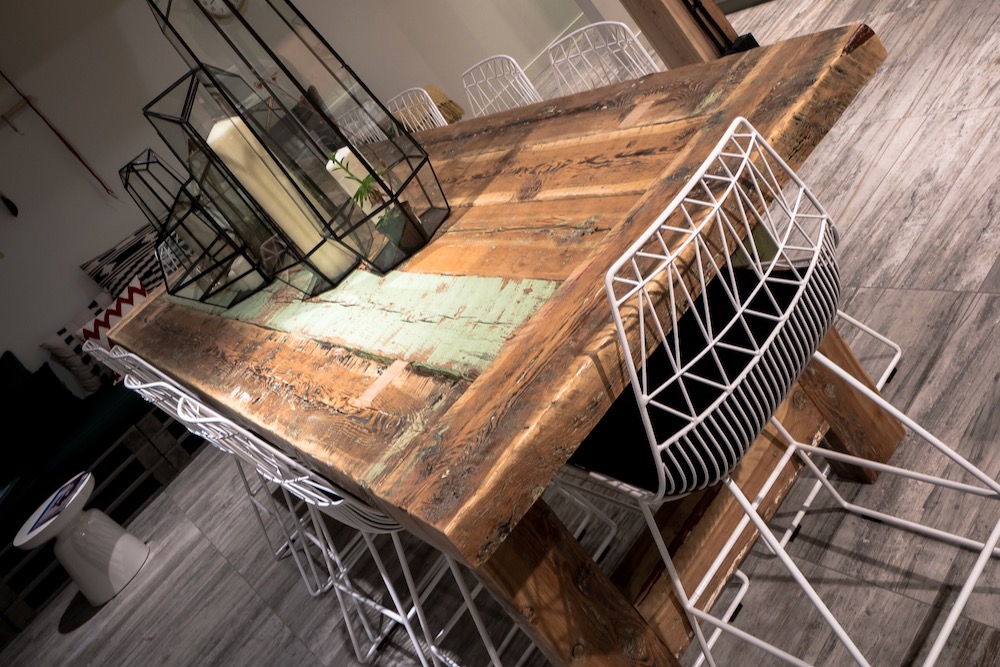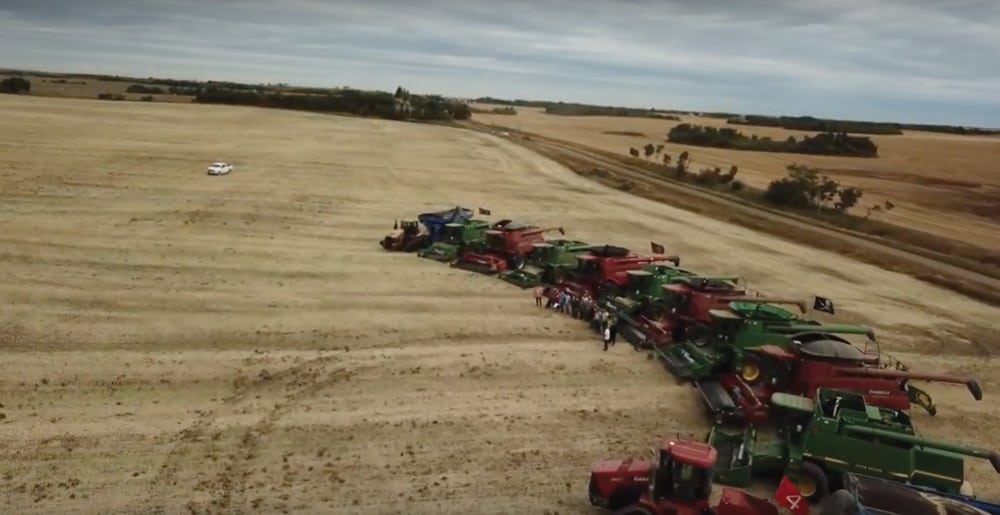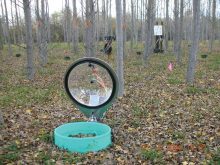For 17 years, Michael Gerrand drove the roads and back roads of southern Alberta for his job as a grazing specialist.
He loved the job and he loved the travel, but there was one thing he’d see every day that stuck in his craw.
“I started to see this trend of all of these beautiful barns getting pushed in a pile and getting burned,” said Gerrand, who calls Pincher Creek home.
“Having grown up on a farm in Manitoba, my dad taught me that everything is inventory. You don’t get rid of anything. There’s no such thing as a junk pile.”
Read Also

The heart of the rodeo
A profile of rodeo stock contractors and their contribution to Alberta’s rodeo culture.
Gerrand wasn’t content to fume, however. He did something about it.
For the past 10 years, he and wife Michelle have operated Salvage Solutions. Its slogan is “reclaim, recover, repurpose” and that, in a nutshell, is what they do with the wood from old farm buildings.
“Clients come to us with their specific project and we can custom build whatever they want, whether it’s a harness table, a mantle, shelves. We’ve done a lot of commercial projects where we clad the entire wall of a restaurant or bar.”
It’s not just an aversion to waste that drives Gerrand’s efforts. It’s a love of the pure quality of the wood used to build so many farm buildings in the late 19th and early 20th century.
“Back in the day, most producers had maybe one sawmill per township,” he said. “Farmers and ranchers weren’t going to spend time cutting down trees that weren’t suitable. They picked the best stuff and they knew what they were looking for.”
In southern Alberta, that usually meant Douglas fir.
“They found it growing in the north-facing slopes. It was dry, tight-grained and burned slowly because there’s no moisture,” said Gerrand. “If you were to go to (a lumber shop) and buy a piece of that clear fir, you would be amazed at how much it costs because it’s rare.”
In some ways, this wood improves with age.
“A lot of times the wood takes on characteristics through the process of sun, wind and time, so you get these patinas and finishes on them that you can’t replicate with any kind of stain or tool. It’s sculpted by the wind and the sun.”
It’s this passion that Gerrand brings to the table when dealing with customers, most of whom have a building they want torn down and off their properties. Regardless of what they want to do, he always tries to convince them to restore the building rather than destroy it.
“I say, ‘It’s been there 150 years. You’re the only person standing between it and being around for another 100 years. Why don’t you put your time and effort into that?’”
His pitch usually falls on deaf ears. People don’t have the time or money. It’s in the middle of a field, it’s not big enough for any of their equipment, it’s in the way when they’re moving equipment in the yard.
“At the end of the day, the landowner usually gets the building removed from their property at no cost to them,” he said. “I can bring a few trailer loads home, process it in our shop, clean off any bits that are unusable, stack it in a nice pile and then hopefully one day sell it.”
Gerrand compares the process to mining for ore.

“You’ve got overburden – rotten wood – you have to get through to get to the ‘ore’ and then you finally get into some stuff that has value. It’s a real balance to take on the right projects and have enough ore to make up for all the work.”
One of Gerrand’s all-time favourite projects was one of his first – the restoration of an old CPR warehouse in Pincher Creek.
“When I first saw it, it was leaning at a 45-degree angle. One wall had fallen in and it was half full of garbage,” he recalled. “So I approached the landowner and together we cleaned it out, pushed it back straight again, reinforced it and put some skylights in it.
“That was our showroom for probably five years. That’s one of the projects I cut my teeth on in terms of knowing that restoring buildings is where I really wanted to be.”
He has also done major projects in Calgary using “massive” amounts of reclaimed wood on building exteriors, including a Pilates and yoga studio in Inglewood, one of the city’s oldest neighbourhoods.
“I’m pretty proud of that job.”
Reluctant salvager
Considering his reverence for old wood, it’s no surprise that Gerrand is a fan of the few grain elevators that still dot the Alberta landscape.
“Hopefully the ones we have left are going to stay standing and be preserved. I think there’s getting to be more awareness around that now,” he said. “The insurance companies had their way for 15 years in the province and on most of the Prairies. They weren’t going to underwrite the insurance on the elevators so down they all came. It’s a tragedy.”
Alvin Herman, president of ABMT Wood Solutions in southern Saskatchewan, feels the same way even though he’s actually in the business of taking down old elevators.
“I think they’re part of what identifies Western Canada when you drive through it,” he said. “Unfortunately they’re old, they’re largely wore out and they’re a liability.”

Herman harvests old-growth wood from elevators, reclaims the panels and sells them for reuse. He started by tearing down an elevator on his own (since sold) farm near Milden, north of Swift Current, Sask. Although he knew it had to come down because it was a liability, he didn’t want to burn the wood or throw it in a landfill.
“That grain elevator was past its best-before date,” said Herman. “I could either spend huge dollars, have it taken down and burned, or figure out how to make some use of it and not leave the liability to my children or the town.”
He found there was a market for this wood, in large part thanks to government programs that encourage its reuse.
“Anyone building new buildings in order to meet the new government standards in terms of net-zero by 2030 will find this wood quite useful,” he said.
Customers also enjoy the material’s aesthetic qualities.
“People like to get their hands on it, especially the beams. They want rough cuts on beams and we’ve got them.”
That level of quality requires the greatest of care and planning when tackling an elevator project, said Herman.
“We’re taking it down in such a way that we’re not damaging them. At least we’re trying very hard. There’s a whole bunch of work that needs to be done pre-deconstruction.
“We’re trying to preserve the wood as intact as possible and we’ve been fairly successful. You develop methods that are of a preservation type of nature. We’re using some very large equipment but if you take the care and design the equipment (properly), the function is there and the preservation is there.”
His company is working on two elevators in the village of Kenaston, southeast of Saskatoon, and has contracts on several more elevators in Saskatchewan.
















